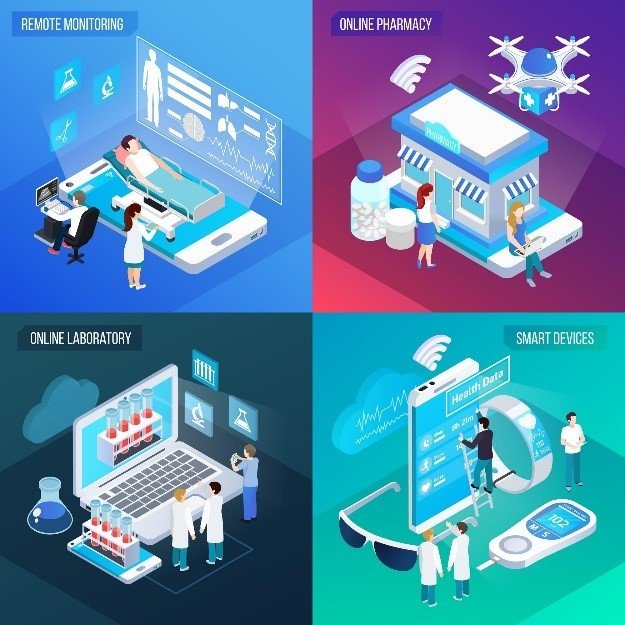In an era where precision and speed are critical, the Internet of Things (IoT) is transforming the pharmaceutical industry from manufacturing floors to patient care. In this article, Parul Gupta and Utpal Kaushik from Avalon Consulting explore how connected devices are driving safer, smarter, and more responsive healthcare systems worldwide.
In December of 2020, when the world was locked down to prevent the spread of a virus causing Severe acute respiratory syndrome, Pfizer faced a nearly impossible challenge: deliver millions of ultra-cold COVID-19 vaccines across the globe with zero margin for error. In the past, manual temperature checks and paper logs might have left critical blind spots. But this time, things were different. IoT-enabled thermal shipping boxes, equipped with sensors, tracked the temperature and location in real-time. As vaccines moved through a vast, complex distribution network, every deviation was flagged instantly, every alert routed to a centralised dashboard. The result? 99.9% integrity maintained, millions of lives protected.
This is just one example of how the Internet of Things (IoT) is reshaping pharmaceuticals into a responsive, intelligent, and deeply interconnected ecosystem. Sensors in factories, smart labels on packages, wearables on patients—all these devices are now nodes in a vast, digital nervous system. From production to packaging, and from logistics to patient care, IoT is turning reactive systems into proactive ones. Companies like Johnson & Johnson have adopted continuous manufacturing through embedded sensors, streamlining production and slashing batch release times from weeks to mere hours. Merck’s use of AI-integrated sensors has cut vaccine discard rates by detecting process bottlenecks early. Novartis, AstraZeneca, Moderna—the list of pharma giants transforming their operations with IoT grows by the day.
At its core, IoT is a network of physical devices—sensors, trackers, machines, even pill bottles—connected to the internet and capable of exchanging real-time data. In the pharmaceutical context, it means machines that report their status, shipments that broadcast their location and condition, and wearables that share biometric data without delay. These devices form a feedback loop that allows companies to respond instantly, whether that’s fixing a faulty machine, rerouting a delayed shipment, or alerting a doctor to a patient’s health change.

The need for this transformation is rooted in the past. Pharma, for decades, operated through slow, manual processes. Imagine a factory where quality control involved paper logs and random sampling, missing micro-defects in drug batches. Or consider vaccine shipments where temperature deviations during transit were discovered only after reaching their destination, often too late. In clinical trials, researchers relied on self-reported symptoms and infrequent visits, limiting data quality and participant reach. All this led to high costs, regulatory setbacks, and even drug recalls. Now, sensors embedded in equipment and packages transmit real-time data to AI-powered systems that adjust parameters automatically or trigger alerts. Remote patient monitoring through wearables allows decentralised trials with higher retention, better diversity, and faster insights. AstraZeneca’s decentralised trials, for instance, have cut dropout rates by 35% while enhancing patient engagement.
Smart wearables are pushing this evolution further into the hands—and onto the wrists—of everyday people. Imagine a watch that doesn’t just tell time—it could save your life. Apple Watches today detect falls and can alert emergency services if there’s no response. Fitness trackers monitor heart rate variability, sleep, and oxygen levels, offering early warnings for potential issues. Diabetic patients use discreet, skin-worn glucose monitors that transmit blood sugar data in real-time to their phones. These aren’t just consumer electronics; they’re healthcare enablers, empowering patients and giving doctors access to a stream of accurate, timely data that can inform treatment.
IoT is also making pharmaceuticals safer and more trustworthy. By combining IoT with blockchain, companies are building transparent supply chains where every product’s journey is traceable and tamper-proof. Boehringer Ingelheim’s AI-powered vision systems scan for packaging defects with higher accuracy than any human inspector. Moderna’s use of digital twins and real-time monitoring has slashed quality deviations by over a third. Even energy and resource use are optimised through IoT, helping the industry meet sustainability goals without compromising quality or speed.
This blend of IoT and pharma is enabling better health outcomes on a global scale. Faster development cycles, safer supply chains, and more personalised care models are no longer future promises—they’re happening now. The pharma sector, once characterised by paperwork and guesswork, is transforming into one where data flows uninterrupted and decisions are made in real time. For patients, it means earlier interventions and more effective treatments. For the industry, it means fewer recalls, faster approvals, and stronger trust with regulators and the public.
Of course, challenges remain. Data security, legacy system integration, and upfront implementation costs are all valid concerns. But the direction is clear. As the infrastructure matures and expertise spreads, the barriers will continue to fall.
IoT isn’t just a tool; it’s the foundation of a smarter, safer, more responsive pharmaceutical industry. And as companies continue to innovate, the ultimate beneficiaries will be the people: patients receiving better care, faster; families protected from disease; and healthcare systems that can finally shift from reactive to preventive. The future of medicine isn’t just digital. It’s connected.